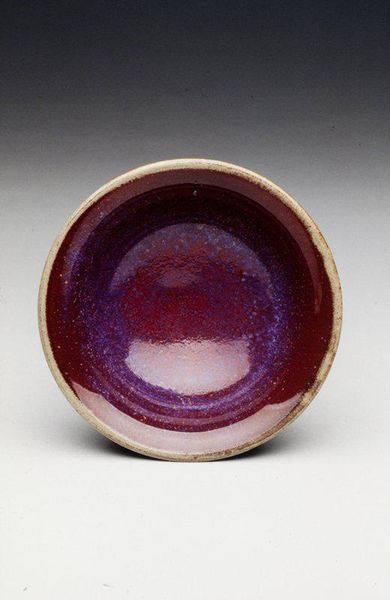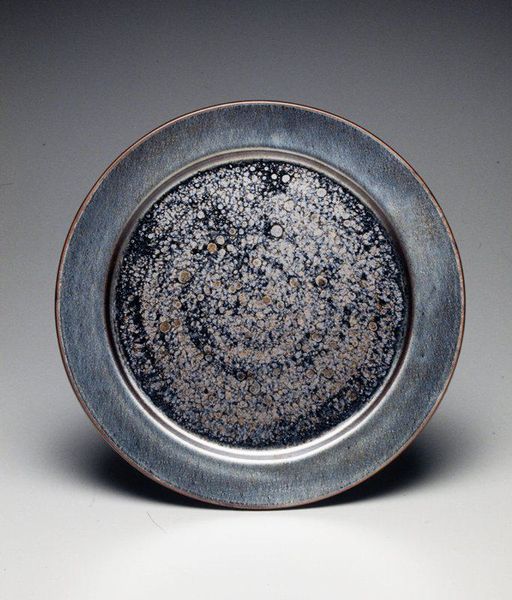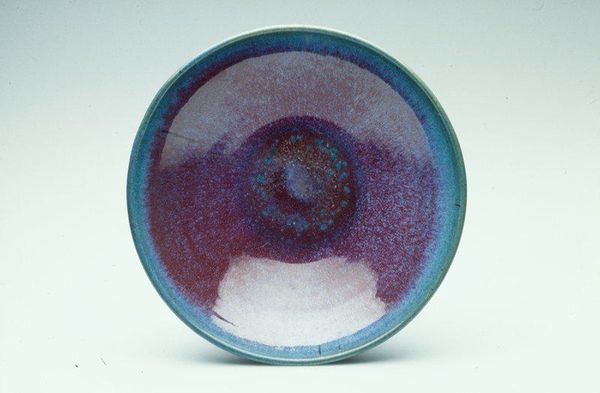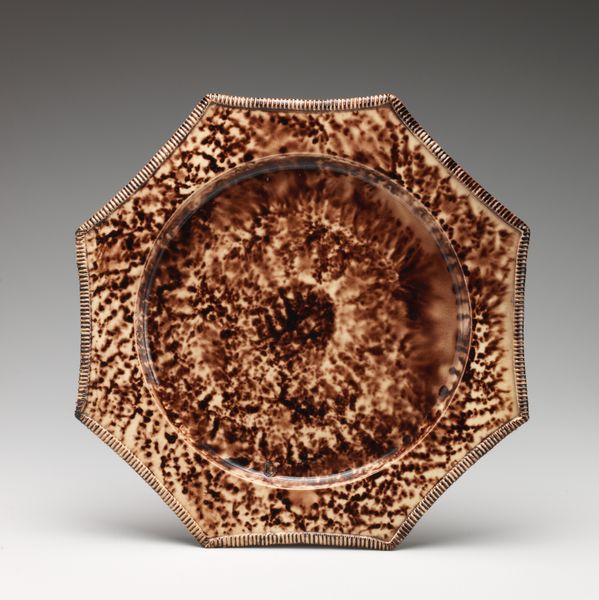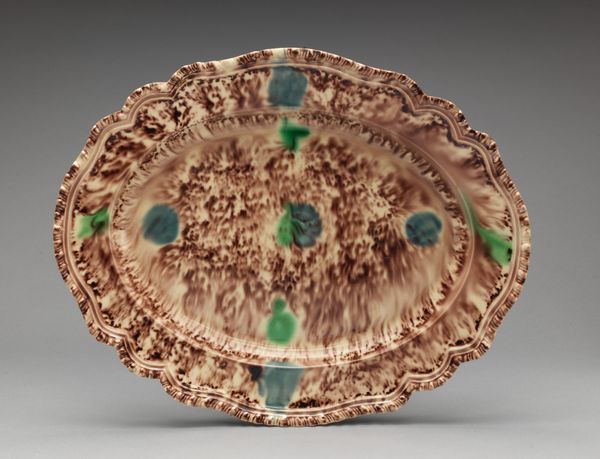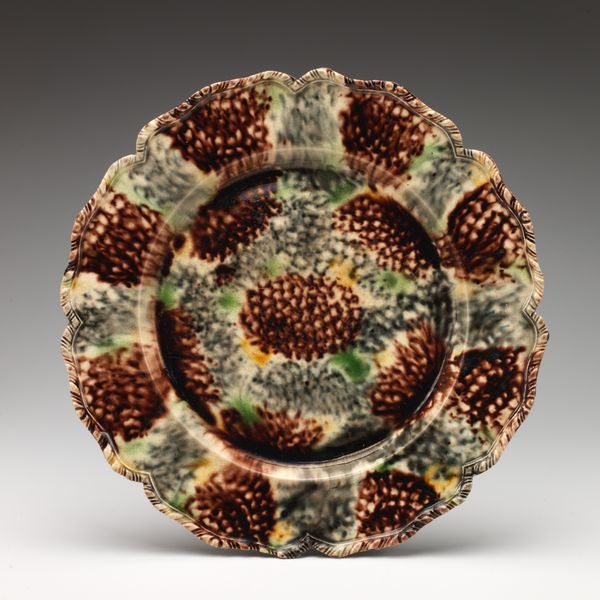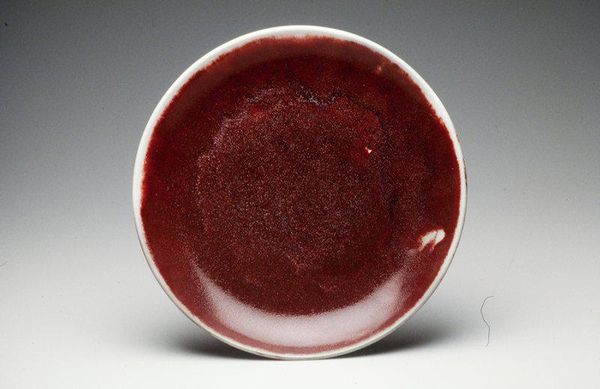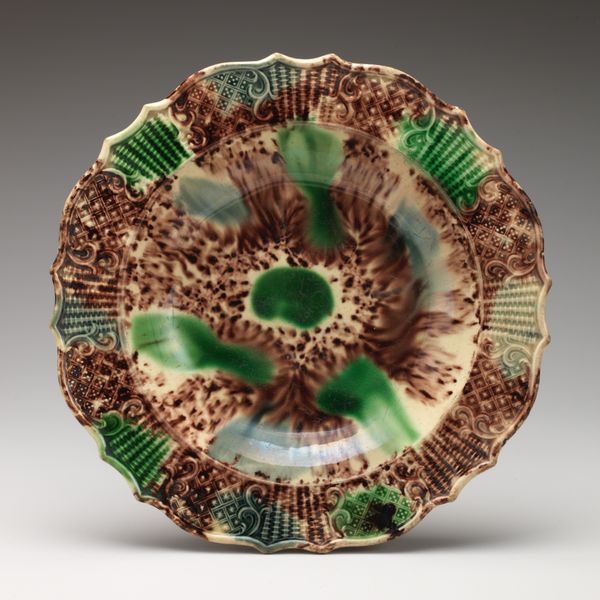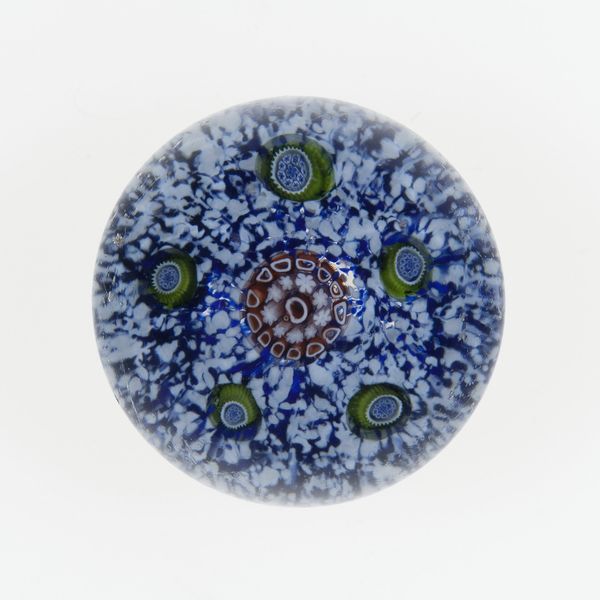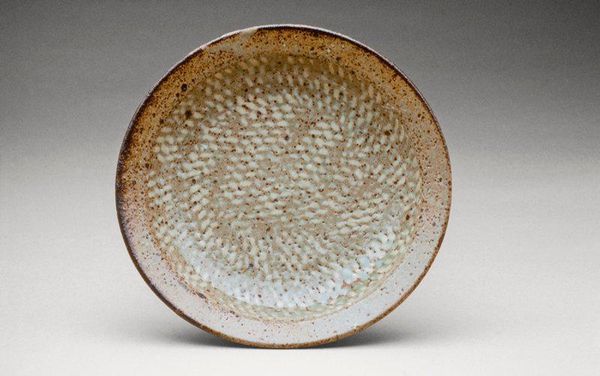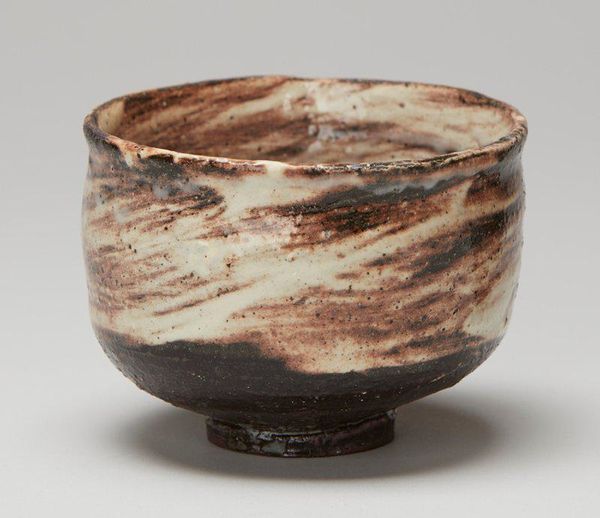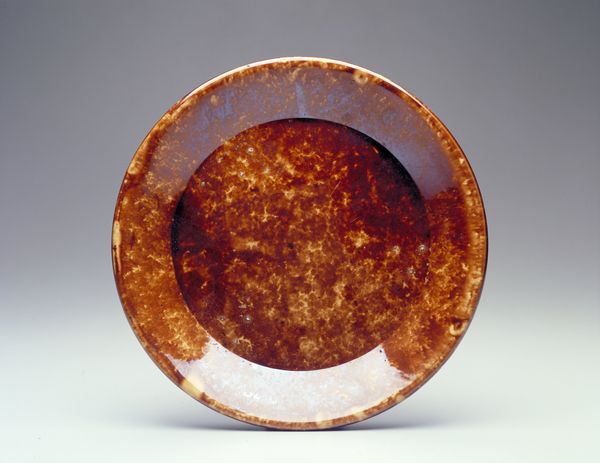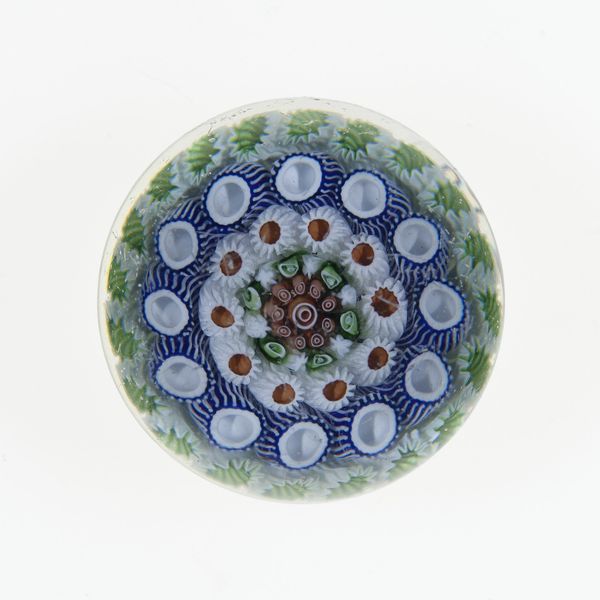
ceramic
#
ceramic
#
geometric
#
ceramic
Dimensions: 2 1/8 x 9 1/4 x 9 1/4 in. (5.4 x 23.5 x 23.5 cm)
Copyright: No Known Copyright
Editor: Here we have Harding Black's ceramic "Bowl," created in 1948. It has an interesting pattern with radiating dark lines. What catches your eye when you examine this piece? Curator: Well, right away I think of the socio-economic context around studio pottery after World War II. Potters were seeking new markets, often embracing craft as a revolt against industrialization. Consider the materiality: ceramic. It's an ancient, ubiquitous medium. What's compelling here is the glaze, the radiating effect, and the deep saturation that probably required careful experimentation and repeated firing. Editor: So you’re focusing on the physical aspects, how it was made rather than its artistic meaning? Curator: Precisely. We have to ask, what kind of kiln was used? Was it electric, gas, wood-fired? The temperature achieved affects the glaze's viscosity and behavior. The maker’s technique and intention, the available technology—all contribute meaning. This is not just about aesthetics; it's about labor, skill, and the transformation of raw materials. Even something as functional and visually straightforward as this speaks volumes. Editor: The radial effect is fascinating; is that deliberate, or a result of the firing process? Curator: It’s both. The maker likely chose or prepared specific glazes. The firing, then, introduced a degree of chance. It's a collaboration between the potter's intentions and the physical forces at play. It begs the question, how does value get assigned? Does the studio-potter's craft belong within "fine art," and why? Editor: That’s given me a different lens for understanding this simple bowl. Thank you. Curator: My pleasure. It's amazing how such a common material object can raise important questions.
Comments
No comments
Be the first to comment and join the conversation on the ultimate creative platform.
